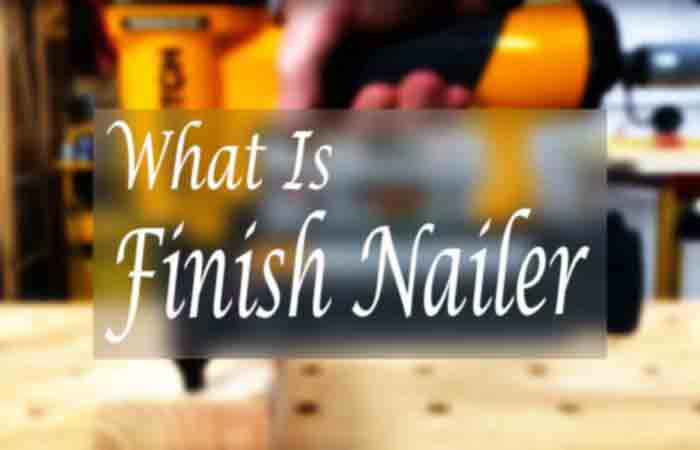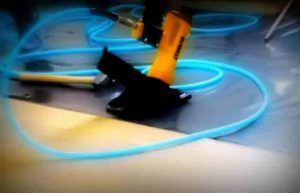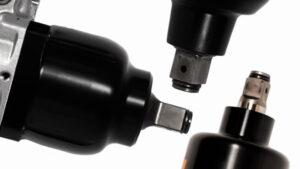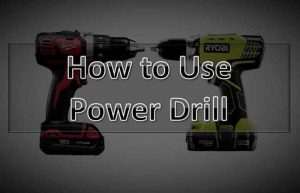A finish nailer is a tool used in woodworking and construction industries to attach trim and molding to surfaces. It is designed to fire small gauge nails, ranging from 15 to 16 gauge, that are thinner than those used in framing nailers. This makes it ideal for finish carpentry, where precision and a clean finish are essential. Finish nailers can be used for a variety of applications, such as baseboards, crown molding, window and door casings, and more.
Key Features To Look For When Selecting A Finish Nailer
A finish nailer is an essential tool for completing a wide range of woodworking projects, from trim work to cabinetry. Here are some key features to look for when selecting a finish nailer:
- Nail Gauge: A finish nailer’s gauge refers to the thickness of the nails it can drive. Most finish nailers are designed to handle 15- or 16-gauge nails, which are the most common sizes used for finishing work.
- Nail Length: A finish nailer’s nail length will determine the depth of penetration and the holding strength of the nail. Look for a finish nailer that can handle a variety of nail lengths to accommodate different project needs.
- Trigger Mechanism: The trigger mechanism of a finish nailer controls the firing of the nails. Some finish nailers have a sequential trigger, which requires the user to press the safety tip against the workpiece before pulling the trigger. Other models have a bump trigger, which allows for faster firing but requires more careful control.
- Depth Adjustment: Depth adjustment is important for controlling the depth of penetration of the nail. Look for a finish nailer with an easily adjustable depth setting to allow for precision control.
- Jam Clearing: A finish nailer’s jam clearing mechanism is essential for quickly and easily removing jammed nails. Look for a finish nailer with a simple, easy-to-use jam clearing system.
- Magazine Capacity: A finish nailer’s magazine capacity determines how many nails it can hold at once. Look for a finish nailer with a high-capacity magazine to minimize downtime spent reloading.
- Weight: A finish nailer’s weight can have a significant impact on user fatigue during extended use. Look for a finish nailer with a comfortable weight and ergonomic design for easy handling.
- Power Source: Finish nailers can be powered by either compressed air or electricity. Compressed air models require a separate compressor, while electric models have a built-in power source. Choose a power source that best fits your project needs and workspace setup.
- Trigger Lock: A trigger lock is a safety feature that prevents accidental firing of the finish nailer. Look for a finish nailer with a trigger lock for added safety.
- Brand Reputation: Finally, consider the reputation of the brand when selecting a finish nailer. Look for a reputable brand with a history of quality and reliability to ensure a long-lasting and effective tool.
How to Use Finish Nailer
Using a finish nailer can be a bit intimidating if you have never used one before, but with a little practice, it can become a very handy tool. Here are some key steps to follow when using a finish nailer:
Safety First
Always wear appropriate personal protective equipment, such as safety glasses and ear protection.
Prepare Your Workpiece
Before using your finish nailer, make sure your workpiece is properly prepared. This includes cutting and sanding the pieces to the correct dimensions and applying any finishes or coatings as desired.
Load Your Finish Nailer
Load the correct size and length of nails into the magazine of your finish nailer. Make sure to follow the manufacturer’s instructions for loading the nails.
Adjust Depth Setting
Adjust the depth setting on your finish nailer according to the thickness of your workpiece. This will ensure that the nails are driven to the correct depth.
Position Your Nailer
Position your finish nailer so that the tip is flush against the workpiece where you want to drive the nail.
Fire the Nailer
Depending on your finish nailer’s trigger mechanism, either pull the trigger or bump the tip against the workpiece to fire the nail. Be sure to maintain a steady hand and aim the nail directly where you want it to go.
Repeat as Needed
Continue positioning and firing nails until you have completed the project. Take breaks as needed to avoid fatigue and maintain accuracy.
Clear Jams
If your finish nailer jams, turn it off, disconnect the air supply or power source, and use the jam clearing mechanism to remove the jammed nail.
Store Your Finish Nailer
When you are finished using your finish nailer, clean it thoroughly and store it in a safe, dry place where it will not be damaged.
By following these steps, you can use your finish nailer to quickly and easily complete a wide range of woodworking projects with professional-looking results.
Conclusion
A finish nailer is one of the best nailing tools which can finish your work in the finest way. This tool is ideal for crown molding, cabinetry and baseboards. It has strong holding power which makes it one of the favorite tools for finishing house hold tasks. This is a perfect tool for your tool kit as it leaves very little holes while nailing which can easily be covered with wood filler without announcing existence of any marks on the wood ever.




